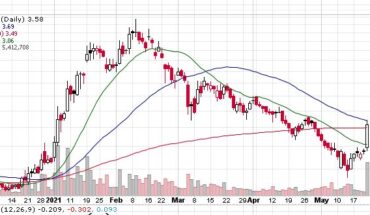Following were the major stock losers on the Canadian exchange on Monday. Keep an eye on the following stocks this week.
Panoro Minerals Ltd. (CVE:PML) was one of the biggest losers on the Canadian market on Monday. The stock fell 13.33% to close the session at C$0.13. Total volume for the session stood at 1.10 million shares, well above its 30-day average volume of 184K shares. The stock has lost 19% over the past week. . PML stock opened at C$0.145 and moved within a range of C$0.1250 – 0.1450. The stock has been seeing selling pressure ever since it provided an update on exploration activities at the Humamantata project. The Humamantata Project is being advanced under the terms of a Joint Venture agreement the Japan Oil, Gas and Metals National Corporation (JOGMEC).
Digihost Technology Inc. (CVE:DGHI) continued to see selling pressure as the stock went down 13.24% to $1.90. Total volume for the session was 856K. compared to its average volume of 758K shares. The stock moved within a range of C$1.8100 – 2.2200 after opening at $2.18. Yesterday, the company announced the launch of its new DigiGreen Initiative, an industry leading plan to reduce the Company’s already low carbon footprint.
In addition to achieving technological and economic excellence, since inception, the Company has focused on being a good corporate citizen and operating its business in an environmentally and socially responsible way.
PetroTal Corp. (CVE:TAL) stock ended lower on heavy volume. The stock decreased by 10.20% to C$0.22 on Monday. The stock saw an unusual volume with more than 3.71 million shares traded hands, compared to its daily average volume of 691K shares. TAL stock opened at C$0.2450 and moved within a range of C$0.2050 – 0.2450. The stock has fallen about 21.50% over the past month. Last week, the company announced its financial and operating results for the three months (“Q1”) ended March 31, 2021. Net income for the quarter was $30.9 million vs a net loss of $31.4 in Q1 2020 driven largely by higher commodity prices.




